THE BEGINNING
Have you ever made an offer to someone thinking that they wouldn’t take it…then they do? That’s exactly what happened in the case of the new Habitat for Humanity Restore location. In this instance, I’m glad our team accepted the challenge and volunteered their time to create nothing short of a piece of art.
When Linda Loewenstein approached Lawrence Group to come up with signage schemes for the new Restore location, the scope was vaguely defined. They wanted something that differentiated their merchandise space from their office space and that was more than just vinyl graphics for wayfinding. They wanted something that would activate their space and give life to their new home. As a not-for-profit, cost was important, and it was anticipated that a lot of the time, labor and materials would be donated. Lastly, the timeline was aggressive — a little over a month from start to finish. All of these seemingly impossible factors helped shape the beautiful product and made for a great experience.
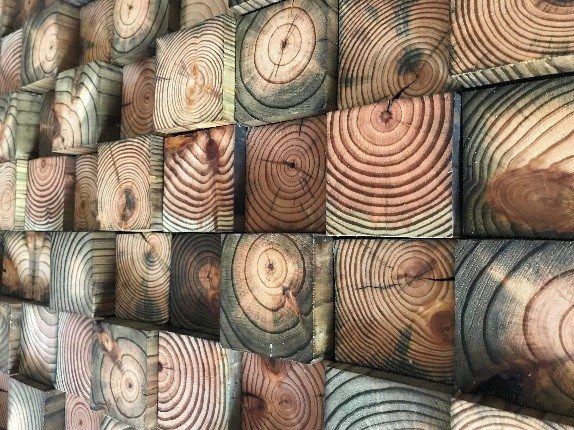
THE TEAM
The team started with Alex Duenwald and Galen Vassar. Rawan Abusaid and I were brought on soon after the first meetings. We came up with a few possible schemes, or kit of parts, that could be repeated throughout the space. Restore was instantly drawn to one in particular for the office lobby. After a few modifications, the concept was finalized and documented. By this point, we only had two weeks to acquire materials and build it. I consulted with Scott Zola, our director of construction services, to make sure we weren’t crazy by thinking we could build this in basically five lunch hours! The construction team was comprised of several people over the course of the week; Galen Vassar, Alex Duenwald, Rawan Abusaid, Andy McAllister, Melinda Starkey, Mary Sue Sutton, Dean Sutton, Julie Spengler, Olivia Welby, Jenny Brcic, Adam Brcic, Erin Hoffmann, Alicia Luthy, Sue Noce, John Smith, and Linda and John Loewenstein.
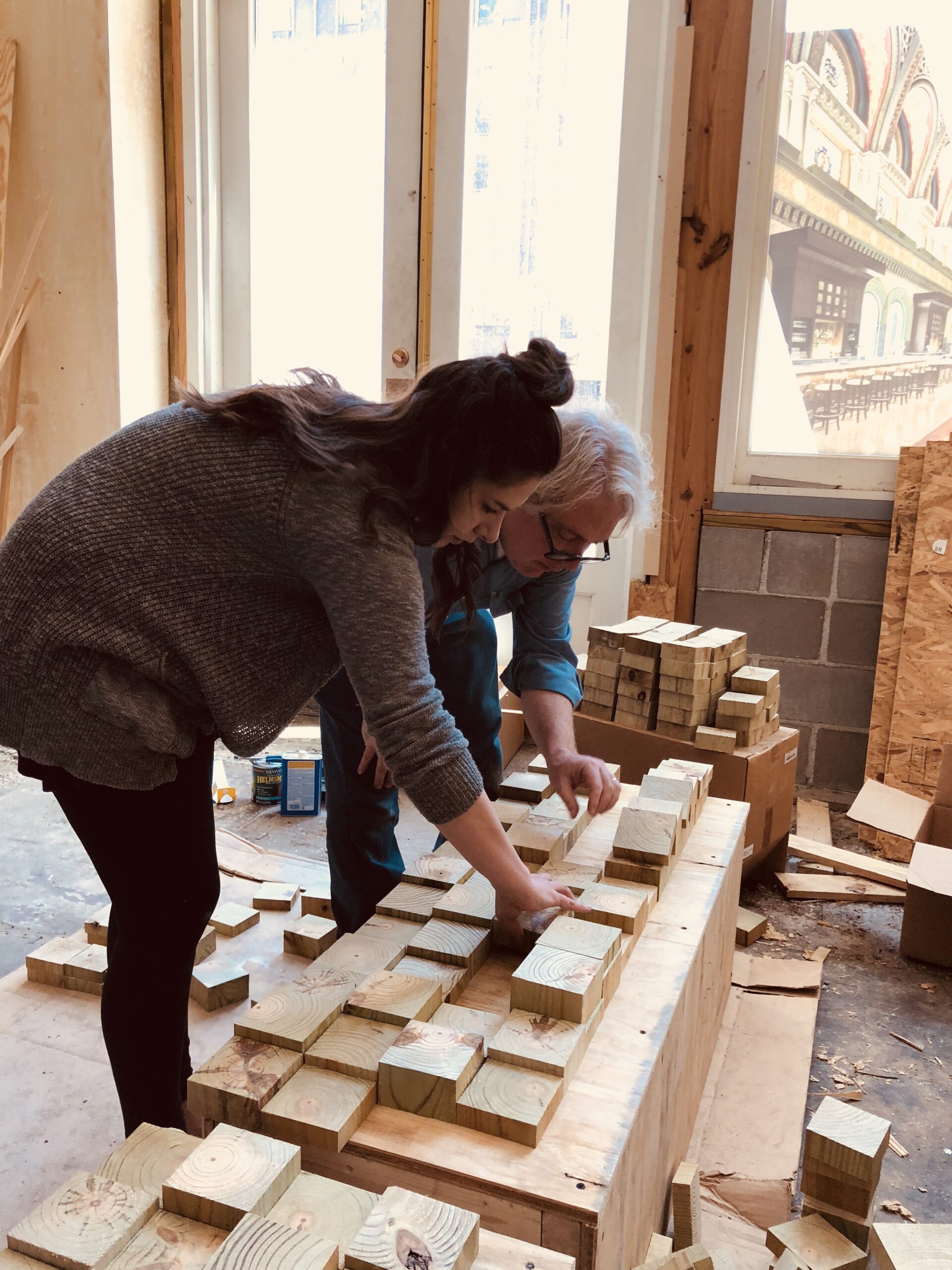
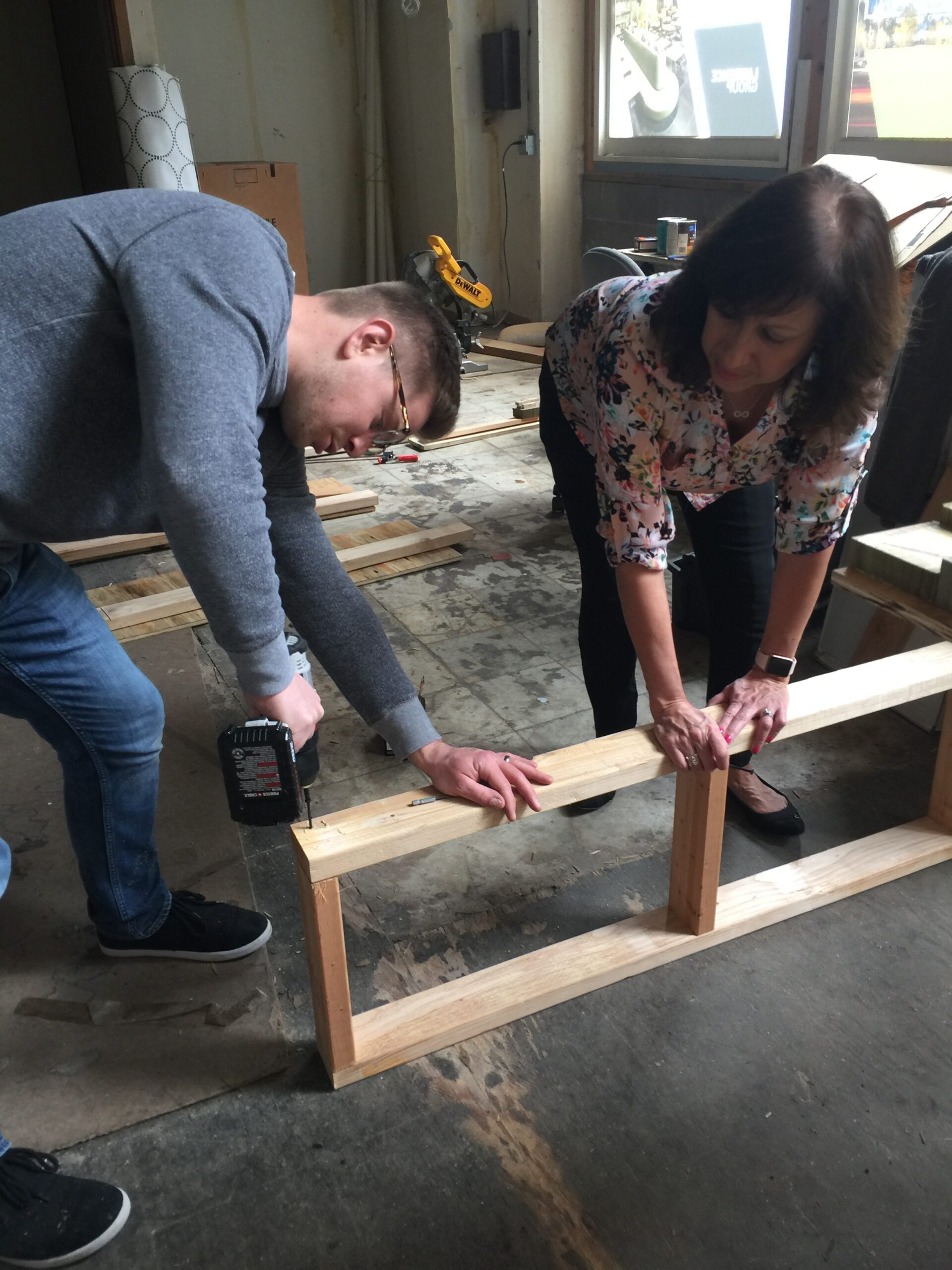
HAPPY ACCIDENTS : AN ANECDOTE
We designed and documented the bench and wall-piece around 2’x4’ units that were cut at 1”, 1.5” and 2”. However, when Linda sent me a progress update on how many pieces her husband had cut (500+), she mentioned she had him cutting 4×4’s. In a state of panic, I called her to see if John could halt that operation and cut 500+ 2’x4’s so that we wouldn’t have to alter the design and measurements. Much to their chagrin, they obliged. When they dropped the materials off, it was clear that the bare 4’x4’s had a lot more charm and character than bare 2’x4’s. The team took a vote and decided that using the 4’x4’ would not only look better, but we would have significantly fewer units to work with. This meant I had to call Linda back and beg for her to beg her husband to cut 500+ MORE 4’x4’s! This was a lesson of recognizing when to stick to the original design and when to entertain something new, even when it means altering a PERFECT set of drawings.
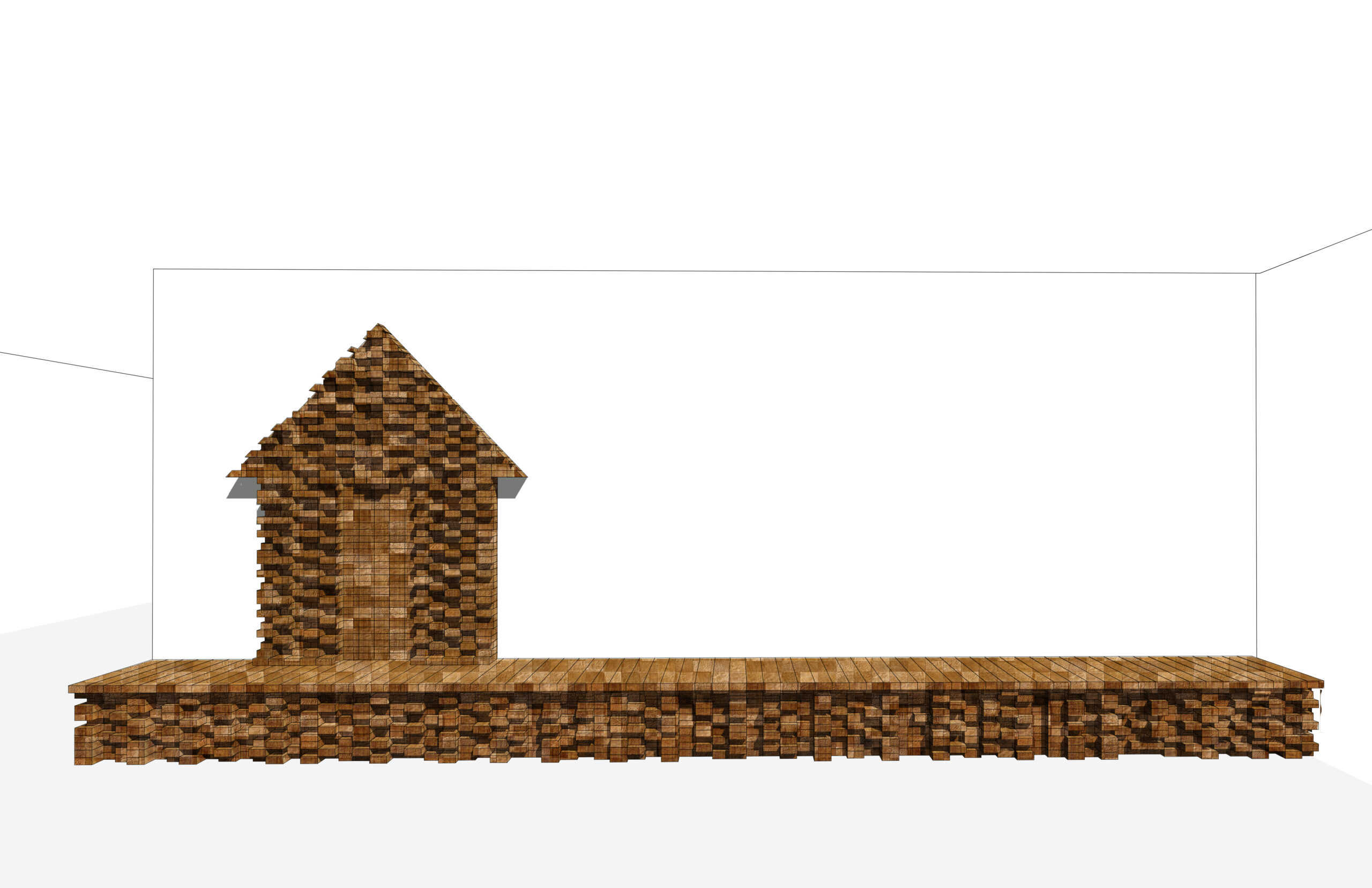
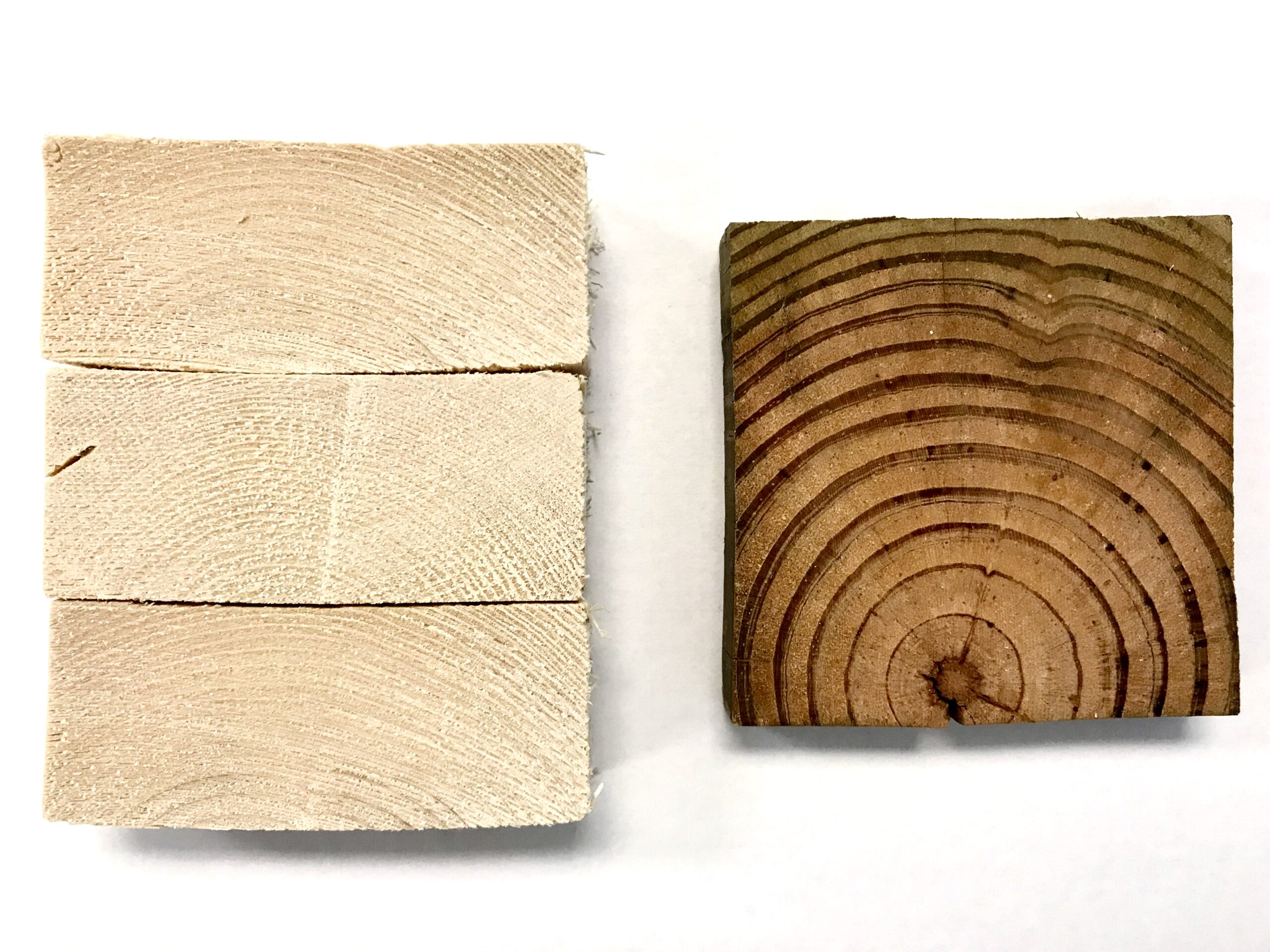
CONSTRUCTION : A CLICHE OR TWO
Pictures are worth 1,000 words…
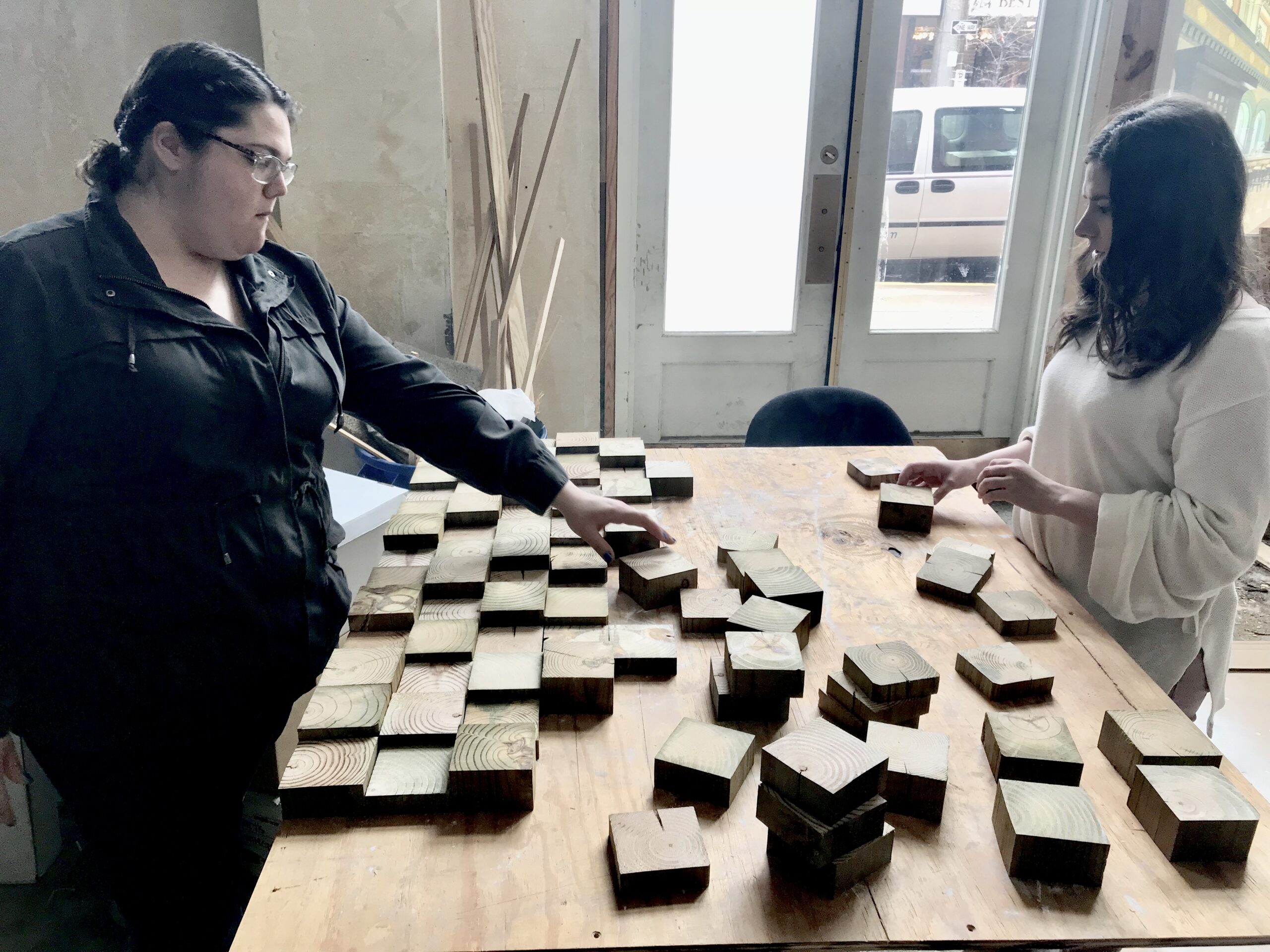

With the change from a 2’x4’ unit to a 4’x4’ unit, many details had to be figured out during the construction process. It was extremely beneficial having a variety of volunteers on the team, each with different skillsets. One lesson we learned was that even if you have many people helping, it’s only efficient if you have enough of the right tools. The cliché “too many cooks in the kitchen” held true. My rebuttal, there can be infinite cooks in the kitchen if you have enough space and equipment. Here are some stats:
- 500+ 4’x4’ blocks glued down
- 130 linear feet of 2’x4’ used
- 1 person cutting 1,000+ blocks = 8 hours
- 67 total man hours of construction
All of the wood for the project was reclaimed from Habitat for Humanity build sites around town.
CONCLUSION
Not only were people excited and willing to give their time to create something beautiful, but the product truly transformed the space. Volunteering can be so much more than just giving up time if everybody involved can be excited about something tangible. I hope that other organizations and institutions see this project as a testament to the diligence of design, commitment to our community and willingness to give more than just time to any given project.
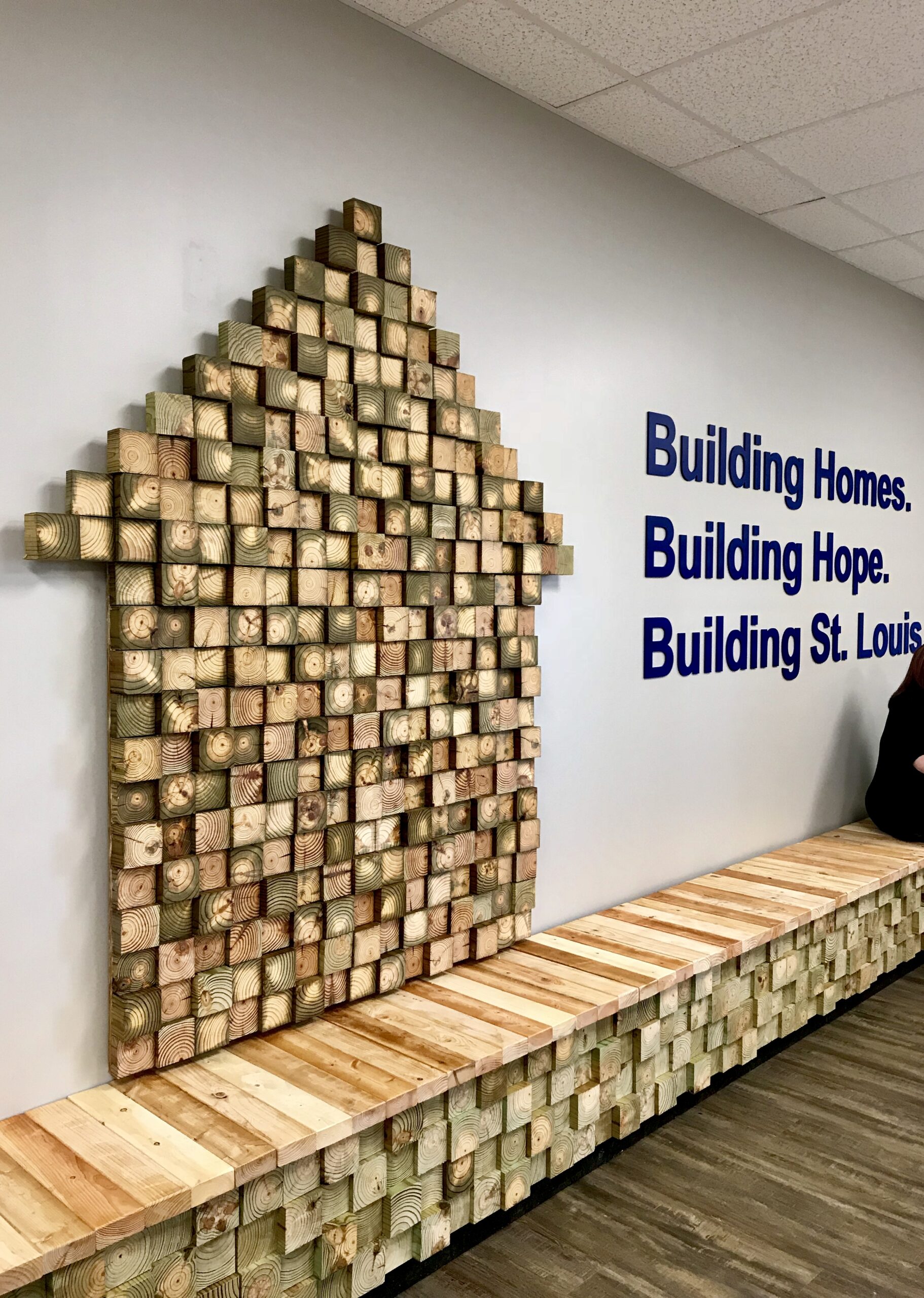
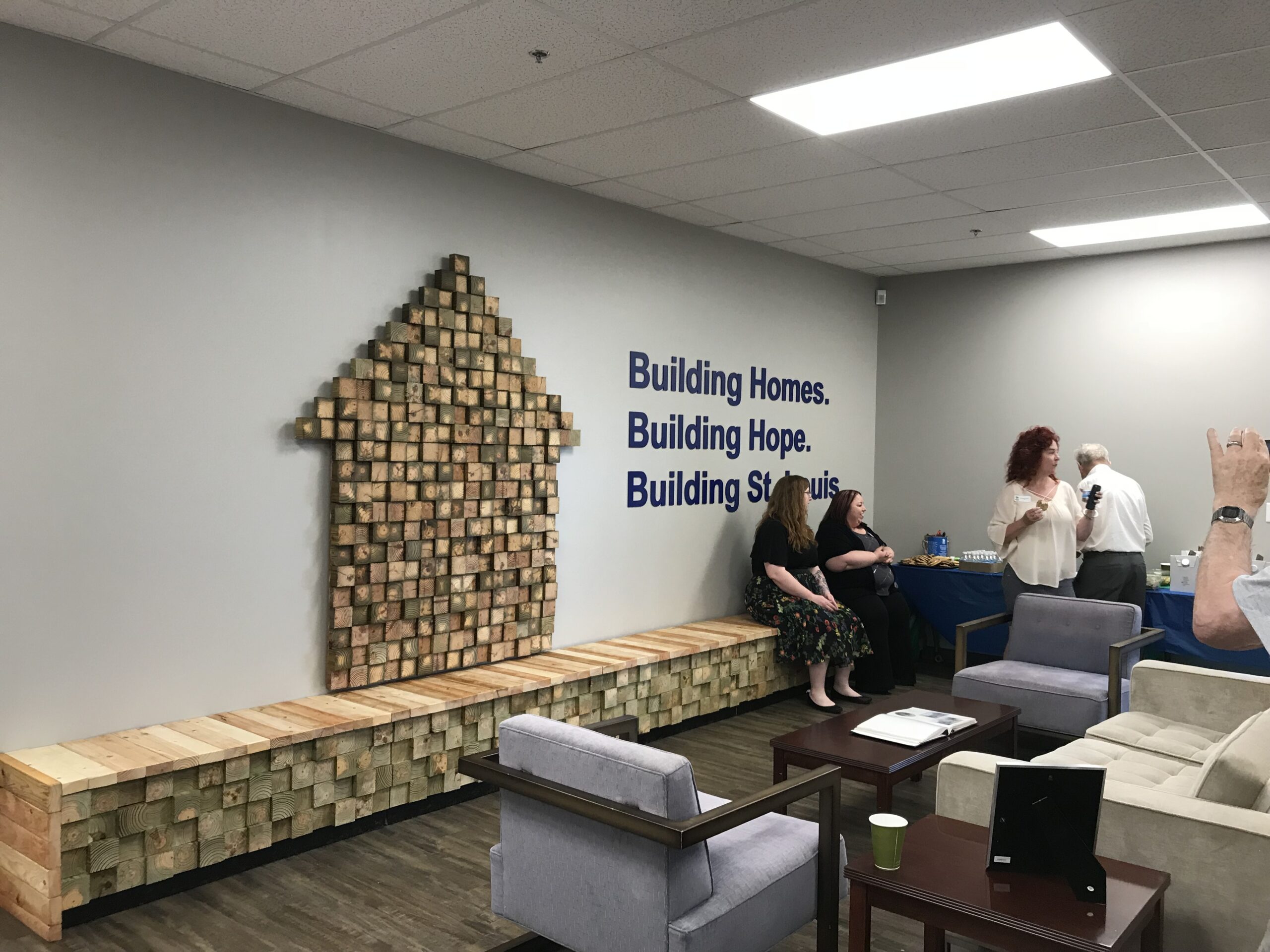
Check out this article in Town & Style’s June 6, 2018 issue.
